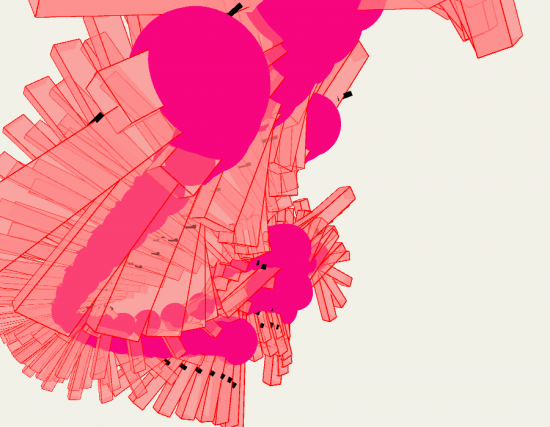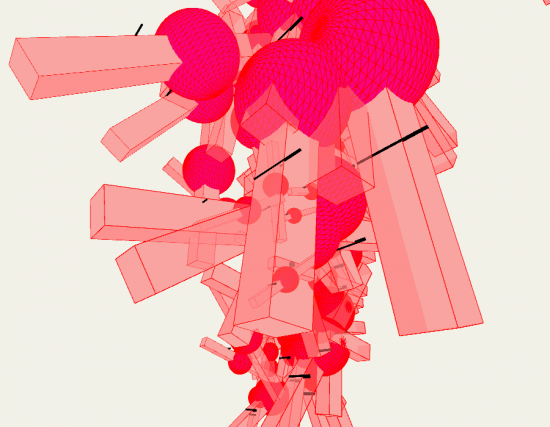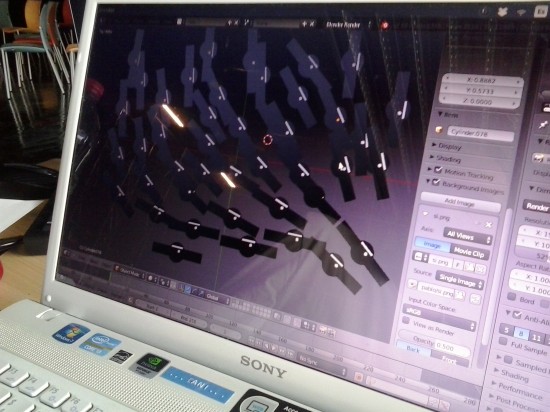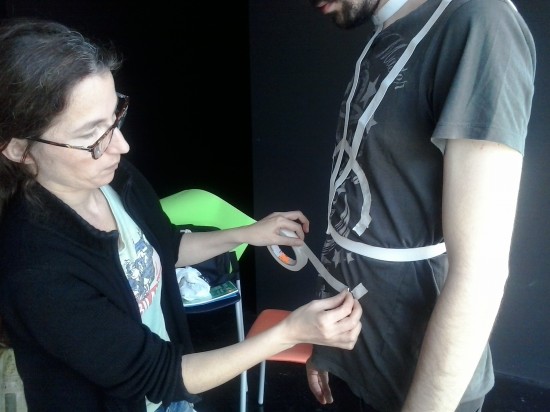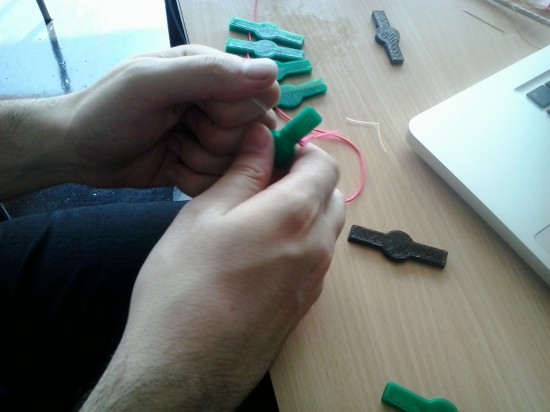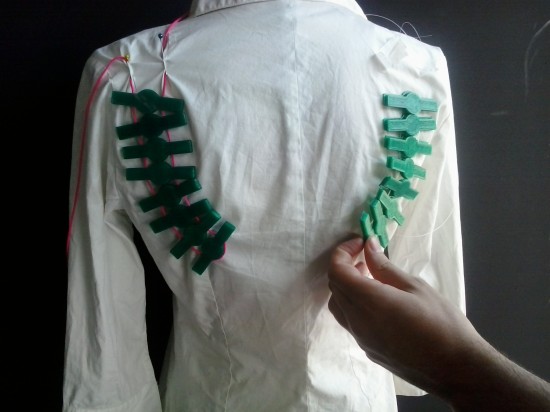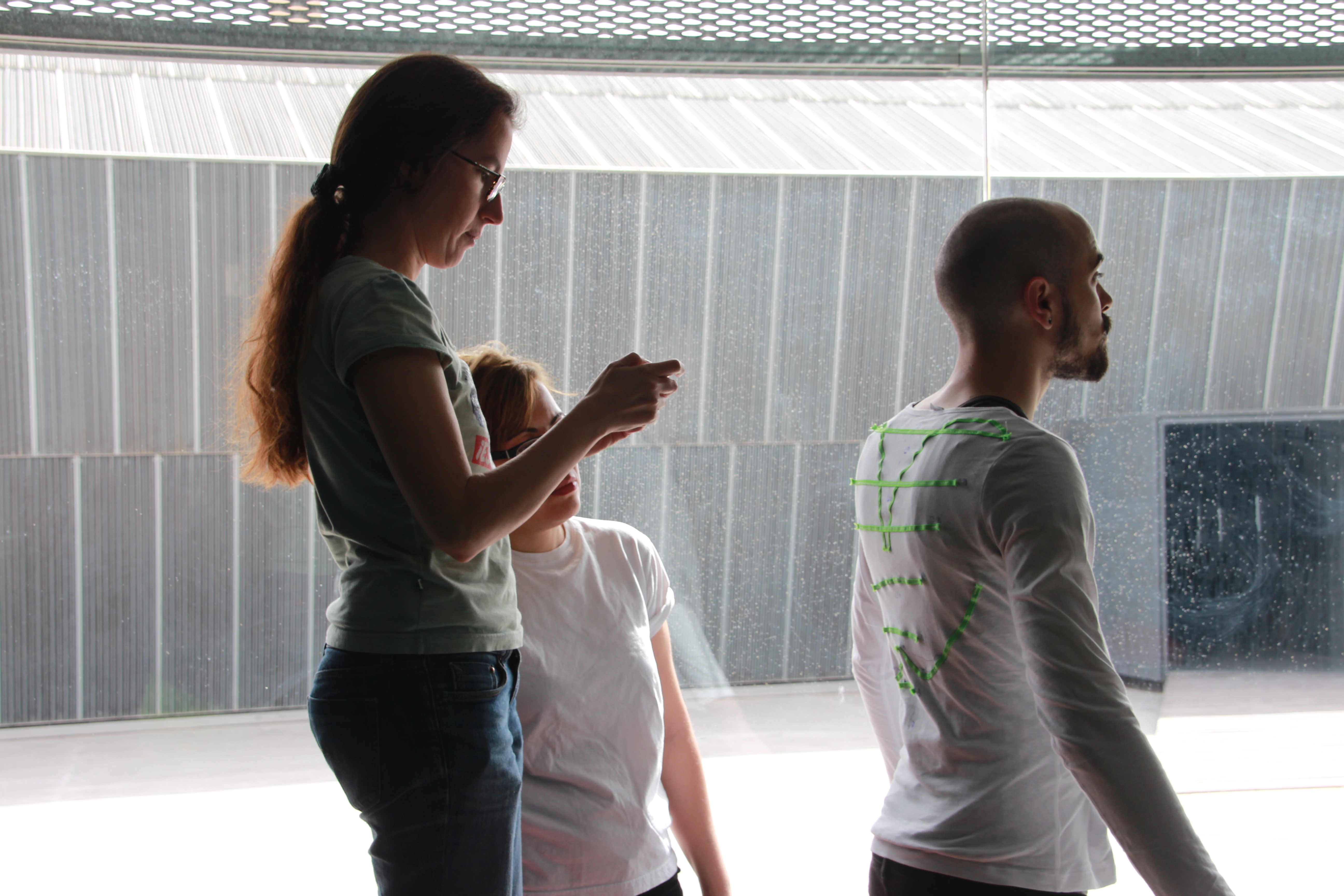Metamorphosis, the space in between (2015) reactive 3D printed wearable structure
Metamorfosis Reactive Wearable 3D Printed structure by paola tognazzi from paola tognazzi on Vimeo.
The textile materials with which we envelope our bodies not only shape the garments but more importantly, from a dynamic point of view, they can guide and choreograph our movements. Our movements change by what we wear. Metamorphosis asks what if it was our movements that could change garments behaviour.
The opportunity of 3d printing technology has led to innovative forms. However these structures are often architectural and static both through their material and design.
Metamorphosis from hidden spaces is a project by Paola Tognazzi that investigates methodologies to create with a Pla 3D printer wearable structures that react to body movement creating a symbiotic process of shape transformation between the wearer and the structure.
This project design from, and for the moving body, applying the dynamics of physical movements to understand the mechanics of patterns expressivity and to inform the 3D design.
Methods, technology and challenges
In this project was used a simple 3D printer to print in PLA the modules. Pla is a rigid material and the challenge was to find strategies to connect and sew separate modules on a shirt so they could rotate in synchrony and create a relationship of transformation between the wearer’s movement and the modules arrangement.
The project focuses on visualising the movement of the muscular fascia of the dorsal ancho in the back.
The result is a 3D structure shaped as a chain of vertebras that when it moves resemble two little wings visualizing and amplifying the movement around the dorsal ancho.
Immersive mutually informing installation
During the research we made a reactive 3D printed wearable, and an interactive visual installation based on the shirt structure. A Kinect capture the position of the audience hands and allows the audience to interact with the projected structure. With his movements the visitor controls the movement directions and speed of the module’s rotation. In this installation the static becomes dynamic through a symbiotic process of formal transformation, driven by the interaction of the viewer. While blurring the boundaries between physical and virtual spaces, it invites the viewer to actively engage with the work and become a participant in its ongoing evolution. Through this process of interaction, the viewer becomes an integral part of the artwork, driving its transformation and shaping its form in a dynamic and constantly evolving way.
Metamorphosis was developed at Media art Futures
Thanks to the collaboration of Mercedes Morote (fashion designer) Pablo López Jiménez, Daniel Soriano Pérez (Artists) and the support of Diego Díaz, Jesus Nieto, Juan Pedro Martinez Lajara, Lucia Segurajauregui, and Anke Van Wijck, Media Art Futures / Centro de Arte La Conservera de Ceutí.

